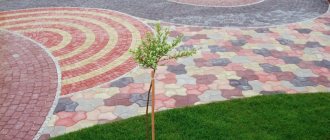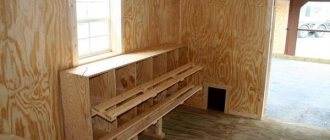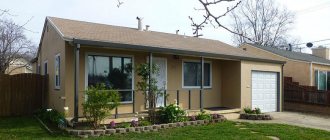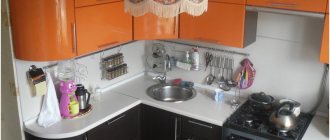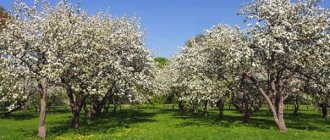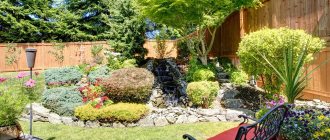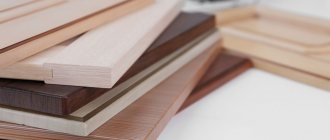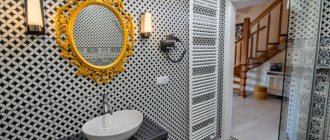A beautiful flower garden along the fence helps to ennoble a narrow strip of land, which owners of private households often ignore. Green spaces enliven the landscape design along the fence, create cozy decorative corners, and protect the area from street noise and prying glances from neighbors. We will tell you in this article how to choose the right plants and create a flowerbed near the fence that will harmoniously fit into a single ensemble of a summer cottage.
Functions of the house front garden
A well-groomed and comfortably decorated front garden is a decisive step towards significantly distinguishing your house and plot from a number of neighboring properties. However, in addition to aesthetic value, such a solution also carries a lot of useful functions. Eg:
- A front garden is a convenient and cozy option for occupying the space between the gate or the beginning of the site and the house. It will organically take up space and will not leave unnecessary emptiness;
- the front garden can act as a parking lot - not the usual empty and concrete one, but decorated with flowers and other decorative elements;
- plants and flowers in the front garden can be a good protection for the owners from the curious glances of named guests, as well as envious neighbors. In any case, you can arrange the front garden in such a way that, in addition to beauty, it also provides protection for personal boundaries and private pastime;
- Also, a front garden can become a free platform for creativity: why take courses in landscape design if you can do it right at home?
It is quite fair that without the proper experience, the question “how to create a beautiful front garden” can cause fear and self-doubt. However, do not be discouraged: creating a front garden is not difficult, even if you have only held a shovel in your hands once. It's never too late to learn something new!
Shrubs
Bushes near a private fence made of corrugated board or chain-link mesh also look beautiful. They are unpretentious in maintenance and are able to close off the territory of a private house from prying eyes.
If the area is sunny, then you can plant lilacs on it. It will bloom in spring and summer; it is better to cover lilac bushes in autumn and winter. Amur lilac is a hardy bush variety.
Lilac
Barberry will make the plot unusual, and you can pick red berries from it in summer and autumn. This plant loves both sun and shade. The main thing in caring for barberry is watering, especially during the fruiting period. This is a medium-height bush with long branches and requires planting 2 m from a private fence.
Barberry
Hydrangea bushes will decorate a private chain-link fence. Hydrangea blooms in red and other colors and tolerates any neighborhood. After planting in a flower garden near a fence, bushes can grow tall in the fall and are capable of blocking the area from prying eyes.
Hydrangea
Future project planning
Before you start implementing the actual material part of the plan, you need to clearly think through the points related to the positioning and functioning of your future front garden:
- dimensions - the breadth of scale of the compositions you have planned will depend on them;
- sunny or shady side - this affects which types of plants are preferable to plant based on the location of the front garden;
- time - the front garden requires care, because the landscaped area requires a significant degree of attention;
- resources and opportunities - many seeds and plantings of various plants cost a lot of money. Also, it is advisable to plan your budget based on the need for materials for creating fences and paths;
- appearance - it is better to think in advance about how to implement the desired design of the front garden: what elements will be included in it, where is it better to lay the paths, and what will be the color of the front garden - monochromatic or close to Pollock’s work?
What other flowers are suitable for hedges?
© Getty Images/Moment Open
Peonies
Classic garden flower art. Peony bushes can transform any garden plot and fill the air with the most delicate fragrance. Since it is a perennial, it is often planted along the fence. At the same time, luxurious peonies are unpretentious and do not require feeding. In order for the flowering to last, you need to plant peonies of different varieties in the flowerbed, then the first buds will appear in May, and the last ones in September.
Decorative beans
It does not have such luxurious inflorescences as roses or clematis, but an ornamental plant with small flowers in white, pink or red shades also has its own charm. It is easy to grow beans; you can plant them near a fence - they grow quickly and cling to a vertical support. For abundant flowering, fertilizing with nitrogen fertilizers is necessary.
Snapdragon
An easy to care for but attractive plant. They can be used to decorate a low hedge instead of or along a fence. Snapdragon received its name for the unusual shape of its petals and variegated colors. There are many varieties of the plant; it can grow in partial shade, but it will do better in a sunny flower bed. Blooms from spring until late autumn.
Lobelia
An unpretentious low-growing plant that will decorate a flower bed. Lobelia literally has a hat of flowers in all shades of blue. It looks elegant and festive. The plant blooms from May to October.
Mallow
If you choose flowers for a line along the fence, then mallow is ideal even for beginners. There will be no problems with growing, only aesthetic pleasure from the sight of a lawn with fantastic flowers. Mallow has large inflorescences, densely framing a straight, tall stem. Now varieties have been bred in a variety of shades - from pink to purple.
Stages of creating a front garden
After drawing up a detailed plan, you need to move on to its implementation. Conventionally, the creation of a standard front garden can be divided into the following stages:
- selection and acquisition of plants, as well as other materials;
- laying and laying out paths;
- installation of fences, lintels and fences;
- planting your preferred plants;
- design of flower beds, clubs and lawns;
- installation and integration of decorative elements into the composition;
- creating a recreation area or parking (if possible and necessary).
The above stages are only approximate and can be supplemented at will, as well as shuffled in any form. First of all, the owners should enjoy how the front garden is made: formalism and stereotypes are not appropriate here.
Corrugated sheeting, brick or natural stone
Even an openwork fence built of brick, and even more so a crudely deliberate stone structure, suggests the use of only plants under them that are accustomed to the shade. On a narrow strip under such a fence, there usually remains only an unpretentious path of lawn grass or stunted saxifrage bushes.
Flower beds along the fence on the site
Meanwhile, by creating a coniferous strip with trees of different heights, you can not only close the fence on the side of the house, but also use the ribbon flower garden technique with long wild plants, which are usually unpretentious and do not require long-term care.
Unlike mixborders, where different plants are used for constant flowering, this is not necessary in narrow ribbons. The main thing is that the strip of conifers, monotonous in color, should contain bright spots, giving it natural splendor and naturalness.
An excellent example of the combination of conifers with bright inflorescences of flower beds along the fence
If we create this option, we can leave a gap between the spruce trees or thujas a little more than usual. To enhance the bright effect, creating a flower bed below and the overall impression is created by hanging pots with hanging plants on the fence.
Do-it-yourself diagram of a flower garden in front of a fence
You can also plant lush, low-growing flowers, placed in hanging beds made from scrap materials.
Sketch of landscaping along the fence
Modern design solutions
Plants are certainly the main decorations of any front garden. However, not only do they create an overall design and aesthetic appeal - it is also achieved with the help of small, but, with proper integration into the composition, very significant decorative units:
- artificial swimming pools;
- gazebos, benches and swings;
- various figurines made of ceramics or metal;
- stands or other elements for climbing plants;
- painted vases or plant pots;
- forged barbecues or firewood.
Entrance design
If the layout of the site assumes close proximity of the porch to the street, the decorative function is completely taken over by the entrance group. It includes railings, steps, a canopy and a small “patch” in front of the house. Here you can place flowerpots with flowers or flowerpots with conifers.
The design style of the railings and the finishing of the canopy should be supported by the design of the balconies, platbands and roof. Harmony can be achieved by using similar materials, colors or geometry.
In addition to design techniques, a few simple rules will help give your front entrance an attractive look. Avoid accumulation of construction debris, old branches and leaves near the gate. Control weeds and excess growth in a timely manner. A neat, well-groomed area is already half the battle.
Popular front garden styles
The main “classic” styles of house front gardens are:
- rustic;
- Japanese;
- Mediterranean or southern;
- Asiatic;
- romantic;
- minimalism;
- modern execution.
Tips from landscape designers
To properly create a front garden with your own hands on your personal plot, you should listen to the advice of professionals in this matter:
- the style of the front garden should be combined as much as possible with the general appearance of the facade of the residential building;
- when laying out a mini-garden in front of the house, it is important not to make a mistake with the scale - it should occupy no more than 2/3 of the area occupied by the building;
- the slope is made towards the path;
- Tall shrubs are planted along the blank wall of the house;
- Flowers with light buds are planted against the background of the dark walls of the building and vice versa.
Front garden appearance options
There are two main types of front gardens - open and closed. The first is a territory, the main content of which consists of flower beds, flower beds, small decorative elements and a minimum of tall plants, due to which a good overview of the house and the entire territory is built.
The closed version assumes the presence of tall plants and at least a meter (or higher) fence, consisting of a hedge or various types of fences.
Note!
Perennial flower beds: TOP-200 photos of the best options and new designs. Instructions and diagram for decorating a flowerbed with your own hands
How to prune tomatoes so that they bear fruit - step-by-step instructions for correct pruning of tomatoes for a better harvest
Currants have pale leaves, what to feed them - a review of the most effective techniques from a gardener
Historical reference
Front gardens came to us from Ancient Rome. At first, they were defeated exclusively by retired legionary soldiers.
Initially, the palisade was a light barrier with sentries, broken by troops during a short-term stop.
In case of a surprise attack by the enemy, it gave the soldiers time to raise the alarm. After retirement, the Roman military, out of habit, placed a palisade in front of the house.
According to the regulations, there was some space between him and the place of deployment - that’s where they began to plant different types of ornamental vegetation
From all of the above it follows that the front garden must be located in front of the facade of the house and can be viewed both from it and from the street. Based on this, it is necessary to develop the design of this landscape element.
Fences and paths: selection rules
Paths, as well as front garden fences, must be chosen based on the general style of the created composition. For example, you can’t do without paths even in the smallest area - there is a chance to trample both the lawn and, what’s worse, the plantings themselves. The most popular materials for paths are concrete, paving slabs and stone mixed with brick.
Hedges, which also serve as a border for flower beds and lawn areas, help to divide a large front garden. It is advisable to surround the front garden itself with a fence: this will give it both aesthetic integrity and will help protect the hand-created oasis from unforgiven visitors.
Fruit bushes
In addition to barberry, there are a number of other popular fruit bushes for sun and shade that do not require special care.
One of the common types is red currant, whose berries on the bush are pleasing to the eye. In addition to red currants, black currants are also grown at dachas near fences in the shade in the neighborhood. Its berries grow in clusters, like the red one. Currant bushes along the fence need to be watered frequently.
Red Ribes
Blackberries and red raspberries can be planted along paths in the shade where there is a border. Fruit bushes look great on large private plots, but if there is little space, then you should not plant them. The blackberries are trimmed because the branches of the bush should not touch the ground.
Raspberries
Viburnum bushes can also be planted near a private fence in the shade, but they need to be watered abundantly. Like blackberries, the viburnum bush is pruned to form a decorative crown and grow shoots of the plant.
Kalina
Fencing options for the front garden
Today, the following materials or ready-made variations are most often used as a fence for a front garden:
- forged fence;
- stone or concrete front garden;
- wicker fence made of branches;
- metal front garden;
- picket fence for the front garden;
- front garden fence made of corrugated sheets.
Street flower beds
The best option for constructing flower beds under a fence on the street is to use a low plastic, wooden or stone fence. The delimitation of space creates a positive emotional mood, the location of the flower garden in a limited private space, and not on a street, ownerless area.
Design option for a street flower garden
It has been noticed that the creation of such a psychological illusion can be created even by a primitive border made of bricks stuck into the ground or metal circles made of bent rods. The further flight of imagination of the creator depends not only on the type of fence, but also on the distance from the roadway (plants do not tolerate air filled with exhaust gases and require special selection).
Optimal flower bed width depending on the height of the fence
Typically, the choice of plants on the street part depends not only on the boundaries of the space that the owner can use, depending on the width of the sidewalk and the distance of the pedestrian passage from the fence. The distance from the water source is also important. If watering plants is difficult, try to choose unpretentious and drought-resistant crops.
Functional differences
The area in front of the house can perform: decorative, environmental and productive (economic) functions.
Decorative model. Direct purpose: decoration of the site. For these purposes, various flowers from tall to dwarf sizes, fancy shrubs and climbing plants can be used.
The ecological function is largely performed by trees that are capable of removing dust and harmful gases from the air as much as possible. Poplar and eucalyptus cope well with this function.
Productive, economic function. Makes it possible to receive visual pleasure and harvest from fruit-bearing trees and shrubs.
